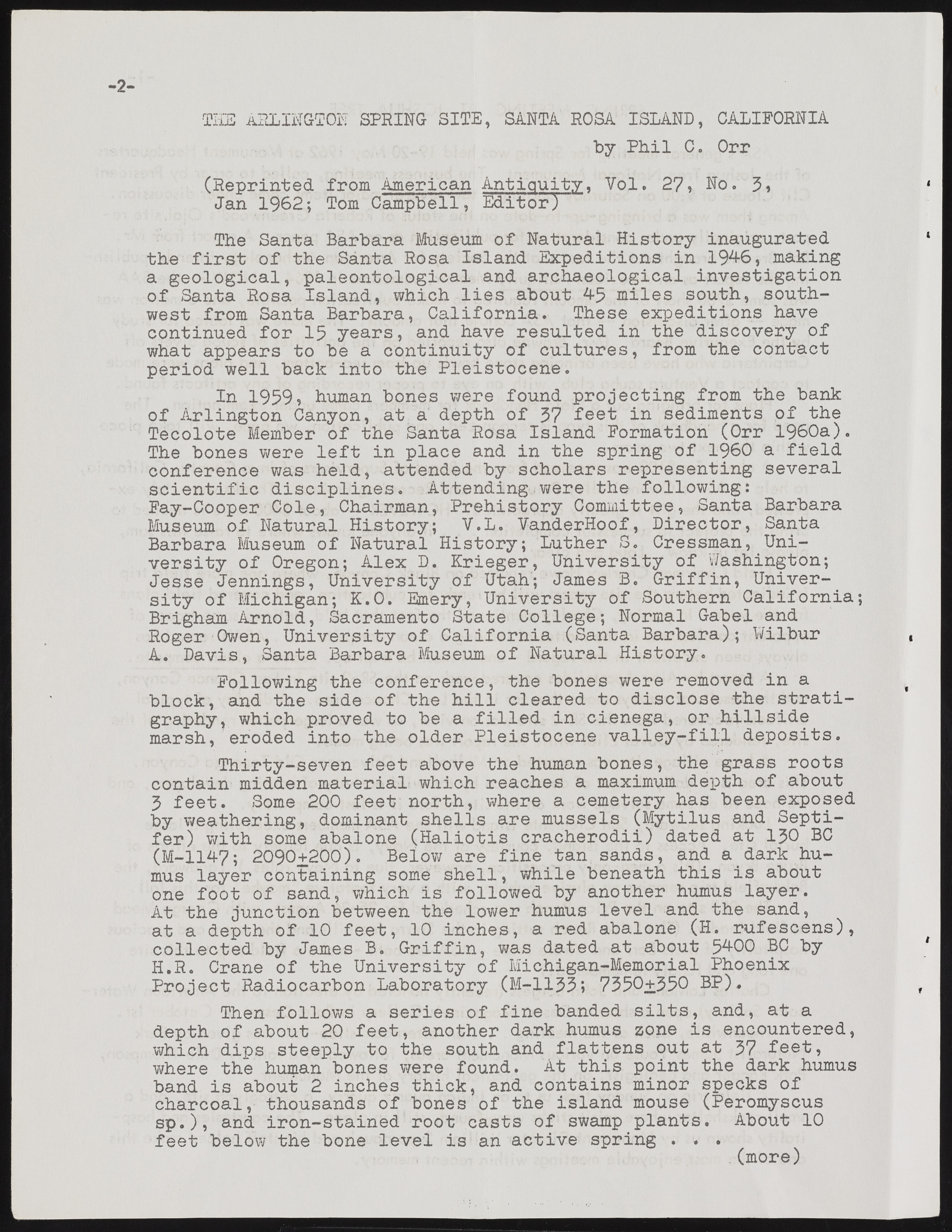Copyright & Fair-use Agreement
UNLV Special Collections provides copies of materials to facilitate private study, scholarship, or research. Material not in the public domain may be used according to fair use of copyrighted materials as defined by copyright law. Please cite us.
Please note that UNLV may not own the copyright to these materials and cannot provide permission to publish or distribute materials when UNLV is not the copyright holder. The user is solely responsible for determining the copyright status of materials and obtaining permission to use material from the copyright holder and for determining whether any permissions relating to any other rights are necessary for the intended use, and for obtaining all required permissions beyond that allowed by fair use.
Read more about our reproduction and use policy.
I agree.Information
Digital ID
Permalink
Details
More Info
Rights
Digital Provenance
Publisher
Transcription
by Phil C. Orr (Reprinted from American Antiquity, Vol. 27V No.'" 3» Jan 1962; Tom Campbell, EditorJ" The Santa Barbara Museum of Natural History inaugurated the first of the Santa Rosa Island Expeditions in 194-6, making a geological, paleontological and archaeological investigation of Santa Rosa Island, which lies about 4-5 miles south, southwest from Santa Barbara, California. These expeditions have continued for 15 years, and have resulted in the discovery of what appears to be a continuity of cultures, from the contact period well back into the Pleistocene. In 1959, human bones were found projecting from the bank of Arlington Canyon, at a depth of 37 feet in sediments of the Tecolote Member of the Santa Rosa Island Formation (Orr 1960a). The bones were left in place and in the spring of I960 a field conference was held, attended by scholars representing several scientific disciplines. Attending were the following: Fay-Cooper Cole, Chairman, Prehistory Committee, Santa Barbara Museum of Natural History; V.L. VanderHoof, Director, Santa Barbara Museum of Natural History; Luther S. Cressman, University of Oregon; Alex D. Krieger, University of Washington; Jesse Jennings, University of Utah; James B. Griffin, University of Michigan; K.O. Emery, University of Southern California; Brigham Arnold, Sacramento State College; Normal Gabel and Roger Owen, University of California (Santa Barbara); Wilbur A. Davis, Santa Barbara Museum of Natural History. Following the conference, the bones were removed in a block, and the side of the hill cleared to disclose the stratigraphy, which proved to be a filled in cienega, or hillside marsh, eroded into the older Pleistocene valley-fill deposits. Thirty-seven feet above the human bones, the grass roots contain midden material which reaches a maximum depth of about 3 feet. Some 200 feet north, where a cemetery has been exposed by weathering, dominant shells are mussels (Mytilus and Septi- fer) with some abalone (Haliotis cracherodii) dated at 130 BC (M-1147; 2090+200). Below are fine tan sands, and a dark humus layer containing some shell, while beneath this is about one foot of sand, which is followed by another humus layer. At the junction between the lower humus level and the sand, at a depth of 10 feet, 10 inches, a red abalone (H. rufescens), collected by James B. Griffin, was dated at about 54-00 BC by H.R. Crane of the University of Michigan-Memorial Phoenix Project Radiocarbon Laboratory (M-1133; 7350+350 BP). Then follows a series of fine banded silts, and, at a depth of about 20 feet, another dark humus zone is encountered, which dips steeply to the south and flattens out at 37 feet, where the human bones were found. At this point the dark humus band is about 2 inches thick, and contains minor specks of charcoal, thousands of bones of the island mouse (Peromyscus sp.), and iron-stained root casts of swamp plants. About 10 feet below the bone level is an active spring . . . (more)

